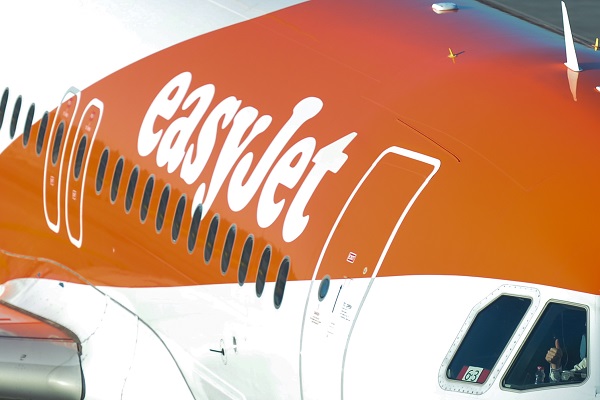easyJet remains on course to hit annual profit target
After a 'slight improvement' in its first-half results when adjusted for the timing of Easter, investors will be hoping for better progress over the next six months. ii's head of markets runs through the numbers.
22nd May 2025 08:35
by Richard Hunter from interactive investor

Despite having posted its usual and expected winter loss, easyJet (LSE:EZJ) has on closer inspection made the sort of progress which should ensure another year of growing profitability.
The group will be hoping for a repeat of last year, where the second-half performance including the peak summer season, resulted in record pre-tax profit. The outlook comments provide some grounds for optimism on that front, with the third and fourth quarters already being 80% and 42% sold respectively, which gives some clear visibility of earnings. easyJet is maintaining its full-year outlook of pre-tax profit of £703 million, enroute to its stated medium-term aim of £1 billion of pre-tax profit.
- Invest with ii: What is a Managed ISA? | Open a Managed ISA | Transfer an ISA
In the meantime, the pre-tax loss of £394 million for the first half is in line with estimates, although down by 13% on the corresponding period given the timing of Easter (a negative impact of £50 million), increased investment in some of its newer and slightly longer-haul destinations and increased costs including fuel. More positively, revenue in-creased by 8% to £3.53 billion, comprising increases of 5% from passenger sales, 7% from ancillary and 29% from the holidays business.
Indeed, it seems that the relatively recent launch of easyJet holidays came at the right time with cost-conscious consumers searching for value packages, and the group has high hopes for the unit’s longer-term contribution to overall profits. This also chimes with the group’s value-conscious appeal and the increasing body of evidence which tends to suggest that the family holiday re-mains sacrosanct and outside of normal budgetary restraints.
The unit now accounts for 11% of total group revenue at £400 million and posted a profit of £44 million for this period, an increase of 42% showing its increasing appeal. Nor is the group stopping there, with a recent tie-up with Tesco Clubcard putting the new brand in front of 23 million households and passenger growth of around 25% expected for the remainder of the year, with a medium-term target for more than £250 million of annual pre-tax profit.
Elsewhere, the benefit of increasing ancillary revenues, which include the likes of customer payments for personally allocated seats, baggage and food, is also becoming clear. Now accounting for 28% of group revenue, customers are clearly still readily prepared to pay for these extras, while also adding another string to the group’s revenue bow.
- Lloyds among bank shares tipped following sector upgrade
- Sector Screener: expect further capital gains from this pair
The balance sheet is also in good shape, with net cash of £327 million improving from a previous £146 million, while additional capacity and the receipt of new planes which are much more fuel efficient will add to overall cost savings. The group is also focusing on improving fortunes for the second half, adding new destinations to tempt travellers to experience different visits to the more traditional holiday spots. This has already had some success, with an increase in the second quarter of 8% in passenger numbers to 18.2 million.
Inevitably the sector is one which is notoriously difficult on any number of fronts, and the cool share price reaction to the update reflects some disappointment on the headline loss figure, where the pre-summer holding pattern is evident.
There have also been a host of external factors outside of the industry’s control traditionally, which have made the airline industry a difficult investment destination. These have ranged over the years from the possibility of strike actions to conflicts and volcanic ash clouds, let alone the major shock which the pandemic brought. Indeed, the easyJet share price remains some 55% shy of pre-pandemic levels, indicating how much damage can be done by exogenous events and how difficult the recovery path can be.
- Insider: IAG chiefs pocket millions from share sales
- Stockwatch: is this still a growth share with legs?
- Sign up to our free newsletter for investment ideas, latest news and award-winning analysis
Nonetheless these numbers come after a decent run for the shares and for prospects generally. The price has risen by 21% over the last year compared to a gain of 4.5% for the wider FTSE100, and the indications are that a strong April will precede a decent outturn during the traditionally profitable peak season. This early tailwind should keep hopes high for the group, with the market consensus of the shares as a buy unlikely to waver despite any early turbulence in the share price reaction.
These articles are provided for information purposes only. Occasionally, an opinion about whether to buy or sell a specific investment may be provided by third parties. The content is not intended to be a personal recommendation to buy or sell any financial instrument or product, or to adopt any investment strategy as it is not provided based on an assessment of your investing knowledge and experience, your financial situation or your investment objectives. The value of your investments, and the income derived from them, may go down as well as up. You may not get back all the money that you invest. The investments referred to in this article may not be suitable for all investors, and if in doubt, an investor should seek advice from a qualified investment adviser.
Full performance can be found on the company or index summary page on the interactive investor website. Simply click on the company's or index name highlighted in the article.